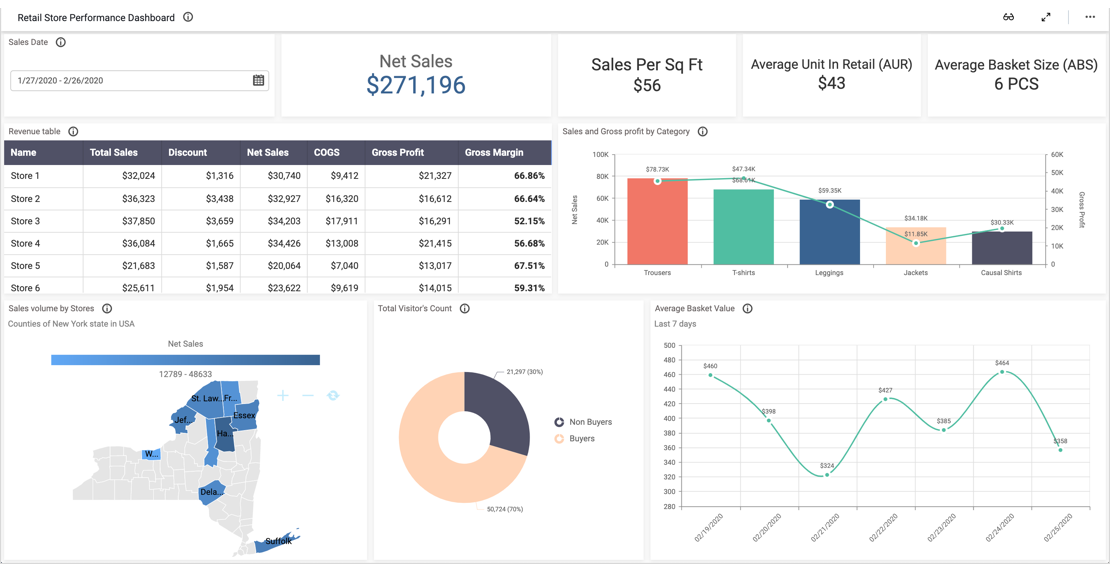- What is the expected date of order placed for top-selling items last month?
- How many items were returned and reported as damaged, and in which category do more fall?
- What is the inventory turnover ratio and gross margin ROI of the T-shirts category?
The “Stock availability” pivot grid summarizes about available count, ordered count category and department wise for each item. Moreover, you can click a specific product category or an item in the pivot grid to know about its inventory metrics, order details, and returned items. Therefore, you can see that the information present in this dashboard is not only about stock details, also it uncovers other inventory KPIs as well.
GMROI—Gross margin on investment—analyzes a retail company’s ability to turn inventory into cash, above the cost of the inventory. The inventory turnover ratio, also referred to as the stock turn, inventory turn, or stock turnover, provides a clear view of the financial standing of your business, letting you know the number of times inventory is sold in a year.
Order tracking and return monitoring
The “Purchase Order Details” table lists all the details related to purchase orders placed, along with their expected dates. You can see that the grid is sorted by an SKU of items by default. Still, we can sort by any column and track the orders as needed. The “Returned Items by Reason” heat map quickly lets you know about the number of items returned for different reasons in each category. Such an aggregated result lets the inventory manager reduce the return items, thereby reducing the rate of customer churn, too.
Stock availability
With the “Stock Availability” pivot grid, inventory managers get an aggregated view of stock with respect to product, item, and department. Sort and filter to have limited data displayed with which anyone can easily compare the produced units with the target set. Also, this pivot grid provides aggregated results like:
- From each row’s grand total, you can get the total number of pieces by item based on product category and department.
- From each column’s grand total, you can get the total number of pieces aggregated as units sold, on hand, and to come by department.
Overall, from this retail dashboard example, inventory managers and retailers can drill down to each product level and access the info they need easily. They can then work effectively to provide good value to the store’s growth, providing the right products at the right time in the right store.



